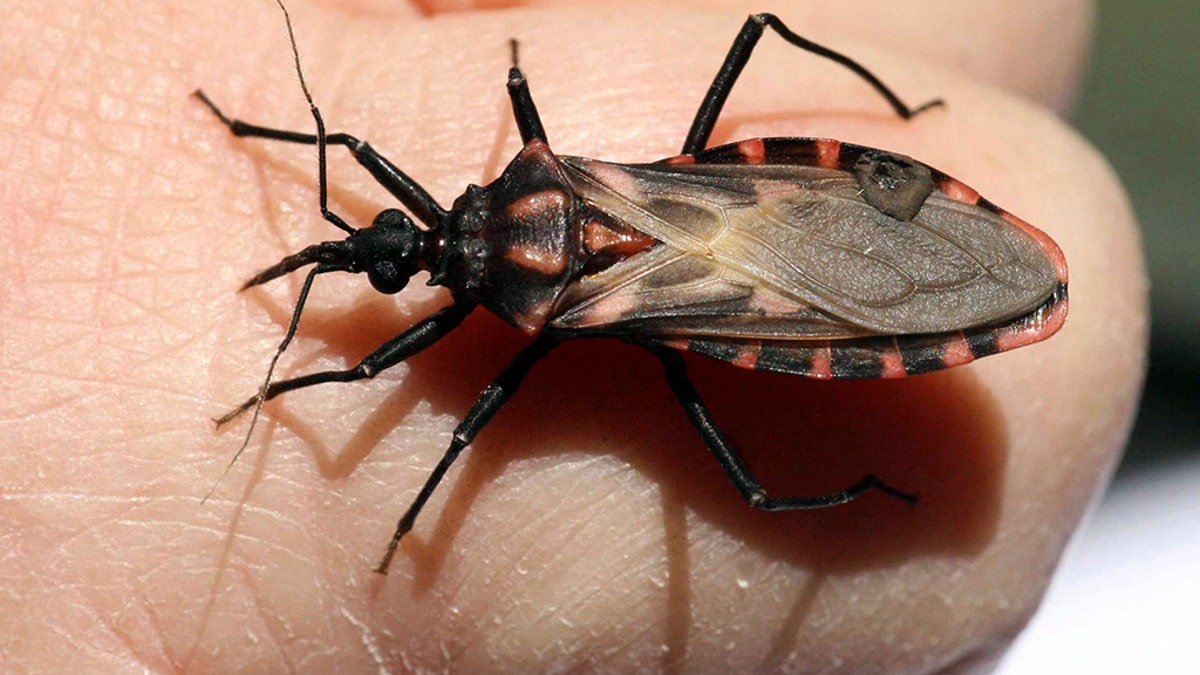The Kissing Bug is Here to Stay: Chagas Disease Now Endemic in the U.S., Researchers Warn
For many, the idea of a potentially life-threatening disease lurking in the shadows of our homes is a chilling thought. While Chagas disease, transmitted by the aptly named “kissing bug,” was once considered a tropical concern, new research suggests it’s now firmly established, or endemic, in the United States. This article delves into the implications of this finding, exploring the disease, its transmission, and what you can do to protect yourself and your family.
What is Chagas Disease and Why Should You Be Concerned?
Chagas disease, also known as American trypanosomiasis, is caused by the parasite Trypanosoma cruzi. It’s primarily transmitted to humans and animals through the feces of triatomine bugs, commonly known as “kissing bugs” due to their tendency to bite around the mouth and face while people sleep.
The initial, acute phase of the infection can be mild or asymptomatic, making it difficult to detect. Symptoms may include:
- Fever
- Fatigue
- Rash
- Swelling at the bite site
- Swollen eyelids
However, the chronic phase of Chagas disease can develop years or even decades after the initial infection. This chronic phase can lead to serious and potentially life-threatening complications, including:
- Heart problems: Enlarged heart (cardiomyopathy), heart failure, arrhythmias
- Digestive problems: Enlarged esophagus (megaesophagus), enlarged colon (megacolon)
Why is Chagas Disease Now Considered Endemic in the U.S.?
While kissing bugs have been present in the U.S. for some time, recent research highlights a concerning trend: the parasite Trypanosoma cruzi is now circulating widely within the kissing bug population and in domestic animals, indicating a self-sustaining cycle of transmission within the country. Several factors contribute to this endemic status:
- Widespread presence of kissing bugs: Triatomine bugs are found throughout the southern United States, from California to Florida.
- Animal reservoirs: The parasite can infect a wide range of mammals, including dogs, cats, rodents, and opossums, creating a reservoir for the disease.
- Lack of awareness and screening: Many people infected with Chagas disease are unaware of their condition, leading to delayed diagnosis and treatment.
- Climate Change: Warming temperatures are expanding the habitat range of kissing bugs, potentially increasing the risk of transmission in new areas.
Protecting Yourself and Your Family from Kissing Bugs
While the news of Chagas disease becoming endemic in the U.S. is concerning, there are proactive steps you can take to minimize your risk of exposure:
- Seal cracks and crevices: Seal cracks and gaps in walls, windows, and doors to prevent kissing bugs from entering your home.
- Remove debris and clutter: Clear brush, woodpiles, and other debris from around your home, as these can provide hiding places for kissing bugs.
- Use screens: Install and maintain screens on windows and doors to keep bugs out.
- Protect pets: Consult your veterinarian about flea and tick prevention products that may also be effective against kissing bugs.
- Be cautious when traveling: If you travel to areas with a high prevalence of Chagas disease, take precautions to avoid being bitten by kissing bugs, such as sleeping under a mosquito net.
- Regular Pest Control: Consider regular pest control measures around your home to reduce the bug population.
What To Do If You Suspect You’ve Been Bitten
If you suspect you have been bitten by a kissing bug, it’s important to:
- Clean the bite area thoroughly with soap and water.
- Monitor for any symptoms such as fever, fatigue, or rash.
- Consult a doctor if you experience any of these symptoms or have concerns about Chagas disease. Early diagnosis and treatment can significantly improve outcomes.
Conclusion: Staying Informed and Taking Action
The recognition of Chagas disease as endemic in the U.S. underscores the importance of increased awareness, proactive prevention, and timely diagnosis. By understanding the risks, taking preventative measures, and seeking medical attention when necessary, we can protect ourselves and our communities from the potential health consequences of this emerging threat. Stay informed, take action, and help spread awareness about Chagas disease to protect yourself and your loved ones.
Frequently Asked Questions (FAQs) about Chagas Disease
Q: Can I get Chagas disease from a mosquito bite?
- A: No, Chagas disease is primarily transmitted through the feces of triatomine bugs (kissing bugs), not through mosquito bites.
Q: Is there a cure for Chagas disease?
- A: Antiparasitic drugs are available to treat Chagas disease, and they are most effective when administered during the acute phase of infection. Treatment during the chronic phase can also be beneficial.
Q: How can I identify a kissing bug?
- A: Kissing bugs are typically brown or black, often with reddish or orange markings around the edges of their bodies. They are about 1 inch long and have a cone-shaped head. You can find images online to help you identify them.
Q: Should I get tested for Chagas disease if I live in an area where kissing bugs are common?
- A: If you have concerns about Chagas disease or have risk factors, such as living in an area with a high prevalence of kissing bugs or having a history of blood transfusions in certain regions, talk to your doctor about getting tested.
Q: Is Chagas disease contagious from person to person?
- A: Chagas disease is not typically transmitted from person to person through casual contact. However, it can be transmitted through blood transfusions, organ transplants, from mother to child during pregnancy or childbirth, and, rarely, through contaminated food.




